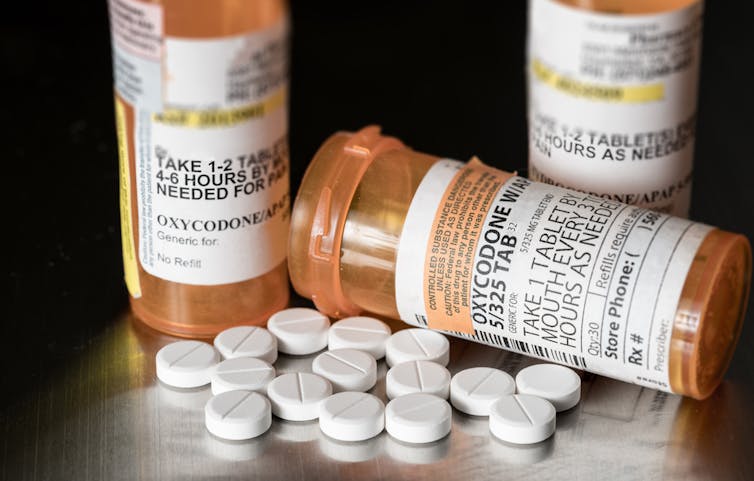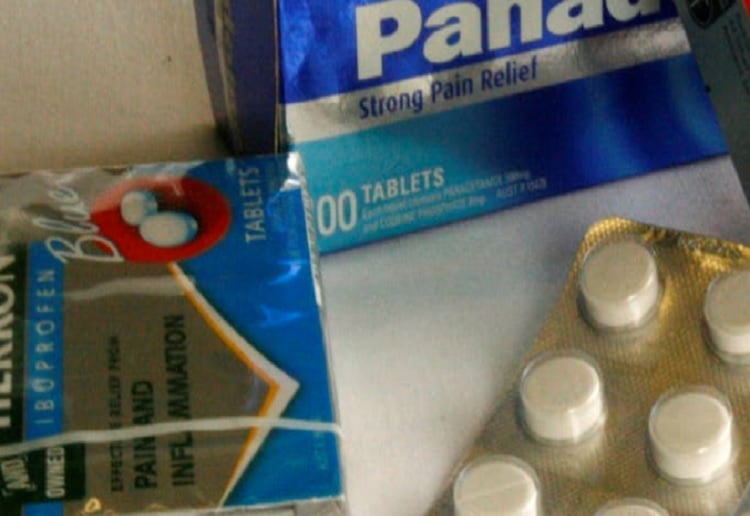Three claims used to justify pulling codeine from sale without a prescription, and why they’re wrong.
Peter Carroll, University of Sydney
From February 1, 2018 all products that contain codeine will only be available for sale in pharmacies with a prescription. This means you won’t be able to buy brands like Nurofen Plus, Panadeine or Panadeine Extra over the counter at your local pharmacy without a prescription from your doctor.
The decision was made by Australia’s drug regulator the Therapeutic Goods Administration (TGA). It was based mainly on the fact that codeine can cause dependence, and its misuse has led to addiction and even death. These facts are not in dispute.
But claims withdrawing such products from sale without a prescription will reduce codeine use are misleading. Nor is it correct to say, as some do in applauding the TGA’s decision, there is no evidence painkillers combined with lower doses of codeine aren’t any more effective in providing pain relief than the painkillers alone. Here are three common claims made about codeine-containing products that are untrue.
1. Low-dose codeine doesn’t improve pain relief
Painkillers such as codeine, ibuprofen and paracetamol act in different ways to reduce pain, and they are sometimes combined into the one tablet to produce greater pain relief. Products such as Nurofen Plus and Panadeine Extra contain 15mg or less of codeine (considered a low dose) combined with either ibuprofen or paracetamol in the one tablet.
Some doctors and organisations have claimed that painkillers, such as ibuprofen and paracetamol, are just as effective when used alone, as when they are combined with a low dose of codeine. Evidence does not support this claim.
Read more:
Why different painkillers are only effective for certain types of pain
In fact, few clinical trials have been carried out to assess how effective it is to add low dose codeine to either ibuprofen or paracetamol. And of these, some have tested doses not generally used in Australia. However, two trials have shown products containing paracetamol and codeine, and ibuprofen and codeine, in concentrations equal to those in Panadeine Extra and Nurofen Plus respectively, are effective.
An Australian study showed after dental surgery, 1000mg of paracetamol combined with 30mg of codeine phosphate (equivalent to two Panadeine Extra tablets) produced significantly greater pain relief than 1000mg of paracetamol alone (equivalent to two Panamax or two Panadol tablets).
Another study, also looked at pain following dental surgery. It showed 20mg of codeine combined with 400mg of ibuprofen (equivalent to two Nurofen Plus tablets) produced significantly greater pain relief than 400mg of ibuprofen alone (equivalent to two Nurofen tablets).

Only a very small percentage of opioid use, that includes drugs like oxycodone and codeine, is not from prescription.
from shutterstock.com
2. Making codeine products prescription-only will reduce codeine use
Department of Health data give an idea of doctors’ patterns when it comes to prescribing codeine-containing products to patients under the Repatriation Benefits Scheme. Under this scheme, low dose codeine products can be obtained by veterans for a concession price with a prescription.
The data show that when doctors have the option to prescribe paracetamol combined with either 30mg, 15mg or 8mg of codeine, more than 90% of prescriptions are written for a 30mg codeine product.
Read more:
Weekly Dose: codeine doesn’t work for some people, and works too well for others
Judging by this, if current users of low dose, codeine-containing products for the short-term treatment of acute pain are forced to visit a doctor, they may potentially receive a prescription for a higher strength codeine product. This may not reduce codeine use, but could increase it.
In 2015-2016, there were more than 3.7 million prescriptions written in Australia for products containing 30mg of codeine and 500mg of paracetamol. It has also been reported most opioid (a drug that acts on the opioid receptors, such as codeine and oxycodone) use in Australia is from prescription products, with over the counter codeine products accounting for only 6% of total opioid use.
3. Taking paracetamol and ibuprofen in combination is a better way to treat pain
It has been claimed a combination product containing ibuprofen and paracetamol would fill the gap left by the unavailability of low dose codeine-containing painkillers. But there are many people who should not take ibuprofen, or only take it with caution. These include people
- with aspirin sensitive asthma (ibuprofen may worsen their asthma symptoms, and potentially cause an acute asthmatic attack)
- with gastrointestinal disorders such as Crohn’s disease, and those with kidney impairment (ibuprofen may make their condition worse)
Read more:
Weekly Dose: ibuprofen – just because it’s freely available, doesn’t make it safe
It also includes people taking medicines that may have a serious drug interaction with ibuprofen. These include:
- Warfarin and other medications used to prevent blood clots (ibuprofen may increase the risk of bleeding)
- some medicines used in the treatment of high blood pressure or heart failure (ibuprofen may increase blood pressure and reduce kidney function)
- low dose aspirin for protection against heart attack and stroke (ibuprofen may reduce the protective effect).
Real-time monitoring
Making codeine-containing products only available with a prescription is unlikely to help those who may be misusing codeine. Pharmacies have introduced a real-time monitoring system for over the counter sales of codeine-containing products, which allows the pharmacist to identify and help those people who may be misusing them.
There is no such monitoring of prescription codeine-containing products in doctors’ surgeries. So, there is no way of identifying and helping those people who may be doctor shopping to obtain multiple prescriptions for the products.
![]() It makes no sense to change from a system where the small percentage of people who may be misusing the products can be identified and helped, to one where they cannot.
It makes no sense to change from a system where the small percentage of people who may be misusing the products can be identified and helped, to one where they cannot.
Peter Carroll, Honorary Professor, Pharmacology, University of Sydney
This article was originally published on The Conversation. Read the original article.
Share your comments below
We may get commissions for purchases made using links in this post. Learn more.




















-

-
-
-
nealsq said
- 22 Jan 2018
-

-
-
-
tessie said
- 21 Jan 2018
Reply
-

-
-
-
mom93821 said
- 20 Jan 2018
Reply
-

-
-
-
Ellen said
- 20 Jan 2018

Reply
-

-
-
-
Jess said
- 19 Jan 2018
Reply
-

-
-
-
mom206279 said
- 19 Jan 2018
Reply
-

-
-
-
mom90758 said
- 19 Jan 2018
Reply
Post a comment12:56 pm
-

-
-
-
june11 replied
- 12 Feb 2018 , 8:02 pm
Reply10:24 am
6:00 am
4:31 am
6:14 pm
2:23 pm
1:05 pm